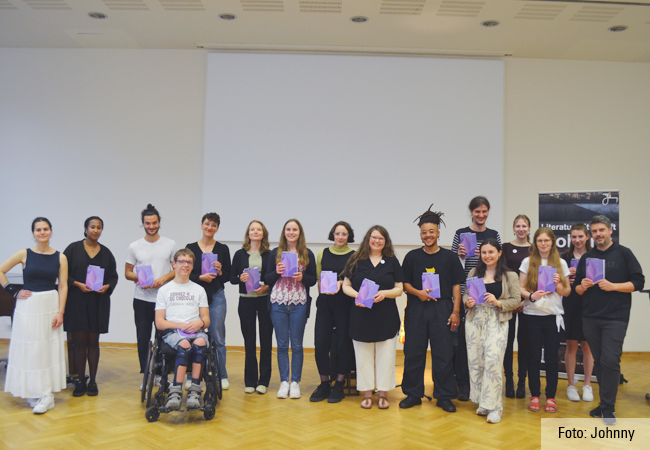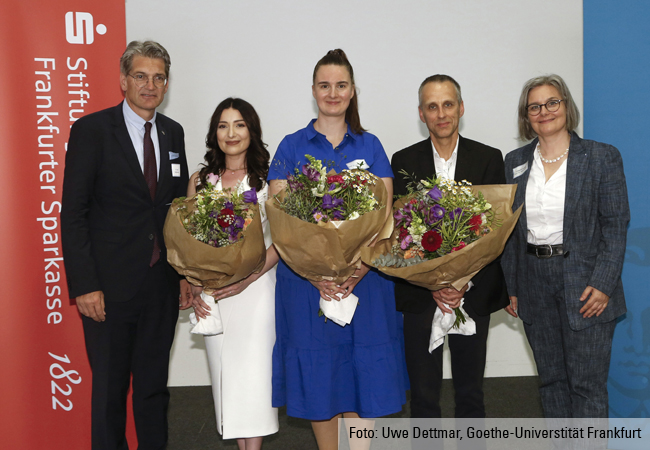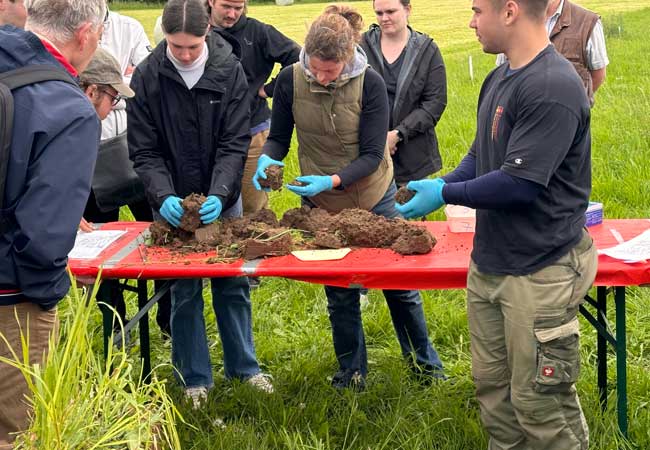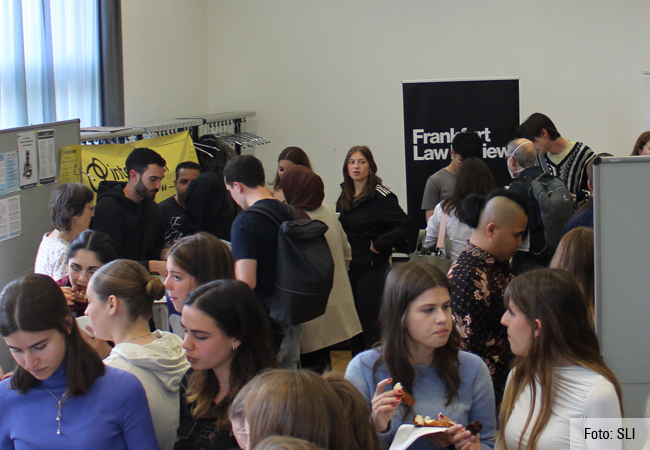Conference on forensic entomology: a report by Jens Amendt
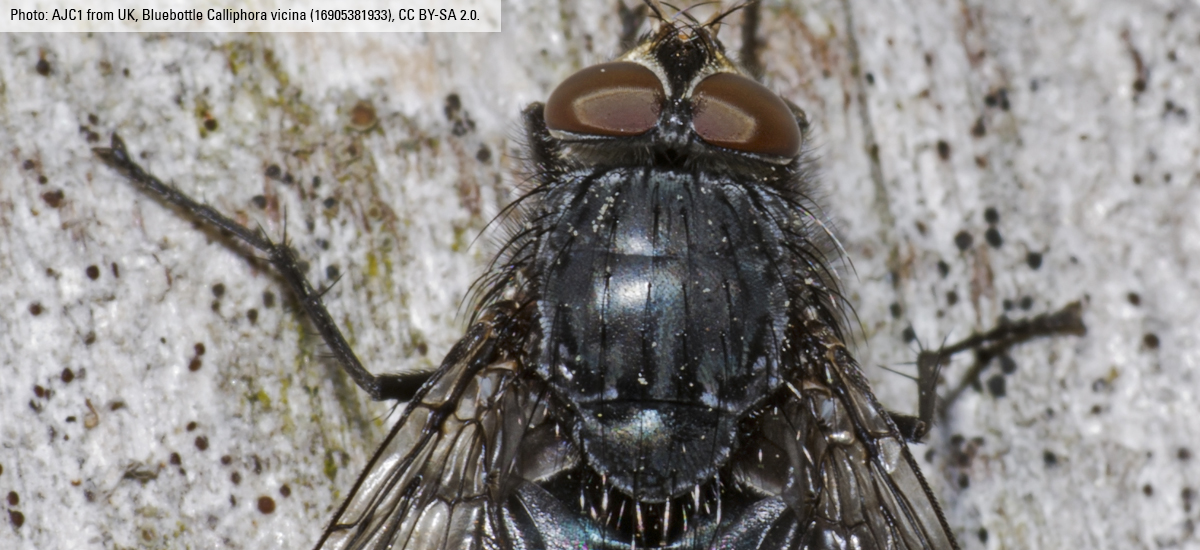
AJC1 from UK, Bluebottle Calliphora vicina (16905381933), CC BY-SA 2.0.
“Insects & Wine”was the motto of an international conference held in Ingelheim am Rhein – which is known for its red wine – from June 12 to 14. Fifty-five participants from 14 countries including South Africa, Brazil and Canada met to discuss the latest findings and developments in forensic entomology. The event was organized by University Hospital Frankfurt’s Institute of Forensic Medicine. For the last 25 years, the institute has been the site of intensive research into the biology and ecology of carrion insects. The knowledge gained can be applied nationwide in the routine work of investigating capital offenses – for instance in determining the time or the circumstances of a death.
No “body farms” in Europe – yet
The conference was held under the aegis of the European Association for Forensic Entomology. It was divided into several themed sessions and had some unusual features, including a focus on the establishment and uses of human forensic taphonomy facilities, often known colloquially as “body farms.” These are outdoor laboratories where research is carried out to understand the decomposition processes in human cadavers under natural conditions (in which carrion insects play a major role). The body farms also enable the simulation of case scenarios for the investigation authorities and are used to train forensic technicians and human remains detection (HRD) dogs. Facilities like these exist in Australia, Canada and the US, but to date none has been set up anywhere in Europe. The biologists at Frankfurt’s Institute of Forensic Medicine, led by Prof. Jens Amendt, are seeking to change that. However, some legal and bureaucratic obstacles remain, and overcoming them will be quite a job. To this end, the Frankfurt scientists invited some high-profile help to the conference. Prof. Shari Forbes, from the University of Windsor (Canada), has already opened three “body farms” in Australia and Canada, and her lecture entitled “Human decomposition facilities – What can we learn from these bodies of Knowledge?” was impressively persuasive. It is clear that the network of these facilities has to be expanded worldwide to provide information relevant to all climate zones and inhabited areas, and to satisfy the different investigation authorities’ numerous requirements and training concepts. This was also illustrated by the demonstration by Hessian HRD dogs directly adjacent to the conference venue – bloody knives, old bones and items of clothing from cadavers were well hidden in the bushes, waiting to be sniffed out by the canine detectives from Germany and Belgium. They completed the tasks without a fault, but Frank Lammers, head of the dog training unit in Mühlheim am Main, stressed how important it is to train the dogs using real human cadavers – which of course cannot be done just anywhere but requires a dedicated location – like a body farm. In their lectures, Shari Forbes and her European colleagues described the immediate practical relevance and also the great variety of research fields in the work on human cadavers. As such, the human microbiome can act as a marker indicating the time of a person’s death, while the natural traces found on corpses are nowhere near being fully cataloged and understood, and the complex chemistry of the “smell of death” can be a fascinating forensic tool for determining the post-mortem interval and the circumstances of a murder.
The blue blowfly, the “gold standard” among insects
Another conference session focused on a species of insect that appears unremarkable at first glance: the blue blowfly, Calliphora vicina. It is the “gold standard” among the European necrophagous insects because it is one of the fly species most frequently found on corpses, and is also well suited to the low temperatures that still often occur in Central Europe. Insects on cadavers help in estimating the time of death, which is very important in cases of homicide if more than one or two days have passed post mortem. Beyond this point, the classical forensic methods like body temperature, rigor mortis and livor mortis no longer provide useful information. However, it is possible to determine a post-mortem interval of up to several weeks based on the age of the insects present on the cadaver – and Calliphora vicina is very important here owing to its frequent occurrence, especially in urban areas. Lecturers from England, Poland, the Czech Republic and Frankfurt provided examples that revealed how complicated it can be to determine insects’ age in actual case work, and how important it is to learn more about the factors that influence these cold-blooded creatures, such as fluctuating diurnal temperature profiles.
Necrophagous insects are at the end of the food chain – and when they feed on a corpse, they also consume those substances that the deceased consumed more or less regularly during their lifetime. In another themed session, a large number of contributions examined the extent to which substances such as various benzodiazepines can be detected in the insects if human tissue samples no longer exist or can no longer be analyzed, and whether consumption of these substances can alter the insects’ ageing process. That would have an impact on the estimated time of death. The data presented from Munich and elsewhere allayed the fears of the audience as this kind of influence was thought to be extremely unlikely.
Cornucopia of methods
The conference presentations in the “free topics” section demonstrated the enormous range of activities in forensic entomology: analyses of the genetic diversity of carrion insects, ecological investigations of the insect succession on dead flesh, new types of indicators like the invasive blowfly Chrysomya albiceps, and techniques adapted from other disciplines, e.g. infrared spectroscopy, for creating a timeline for the weathering of insect remains at the site of a cadaver. A veritable cornucopia of methods was presented, which was matched by the comprehensive range of specialists attending the conference: from forensic pathologists to curators of natural history museums all the way to employees at the most varied (inter)national criminal investigation departments. The large number of contributions from early career scientists was also welcome – a total of 14 lectures and posters were “assessed” by the conference’s participants, resulting in an honor for the best one.
The final panel discussion addressed a major problem in forensic entomology. Whereas “genetic fingerprints” and the “virtual 3-D crime scene” are firmly established methods for investigators, all too often insects still lead something of a Cinderella existence at the European level. The forensic project “MaDE in Deutschland” (“Maggot in Germany”) in Frankfurt is intended to remedy this situation with funding from the EU. It will operate across national borders, serving as a best practice for other European professional development and information projects. Encouraged by such a positive outlook, the attendees enjoyed the wine tasting that concluded the event all the more – Ingelheim showed its best side here, too. It will be interesting to see whether next year’s conference venue can keep up the standard. In culinary terms this should not be a problem, given that the next location is Parma…
At the Institute of Forensic Medicine, Prof. Jens Amendt is responsible for the entomological assessment of homicides and unclear circumstances of death, and teaches and researches the subject of forensic entomology at Goethe University Frankfurt. He is also a founding member and the current president of the European Association for Forensic Entomology, and is a board member of the German Society of Medical Entomology and Acarology (DGMEA).



